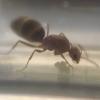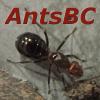Hello Ant Wizards,
The ants in the two links below dominate my driveway. They're essentially slow, extremely fast, large ants. They are smaller than camponotus workers. I have assumed they are formica ants but i'm only making this assumption because I assume formica to have this size and behavior.
The queen I found is in the links below and has a similar color pattern and came from within the colony's territory. My spitball guess is that these workers and this queen are both Formica subsericea. I'm absolutely winging it - so don't let my guess lead your opinion.
Thank you for your time,
Kalen
1. Location (on a map) of collection: Sharpsburg, Georgia Zip: 30277
2. Date of collection: 6.19.18
3. Habitat of collection: Southside Atlanta suburbs are carved out of forest.
4. Length (from head to gaster): 12-14 mm https://imgur.com/4MFmGXO
5. Color, hue, pattern and texture: matte black with polished black stripes
6. Distinguishing characteristics: I think i see three to four holes in the top of her head. Large eyes. The stripes on her gaster seem to constrict causing a wave like pattern instead of a smooth curve.
7. Distinguishing behavior: NA
8. Nest description: NA
9. Nuptial flight time and date: NA
[Images of ant]
Top
Top/Side profile
[Images of nest]
[Images of habitat]





















